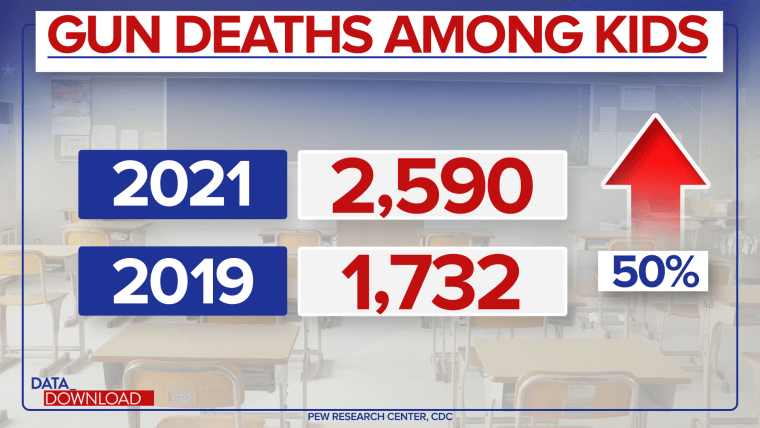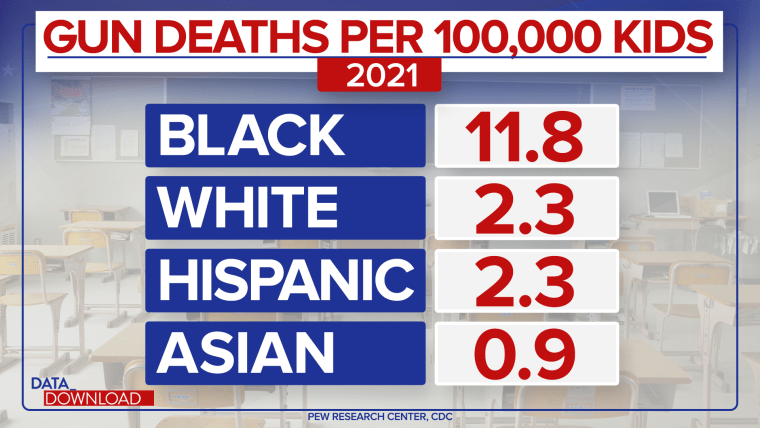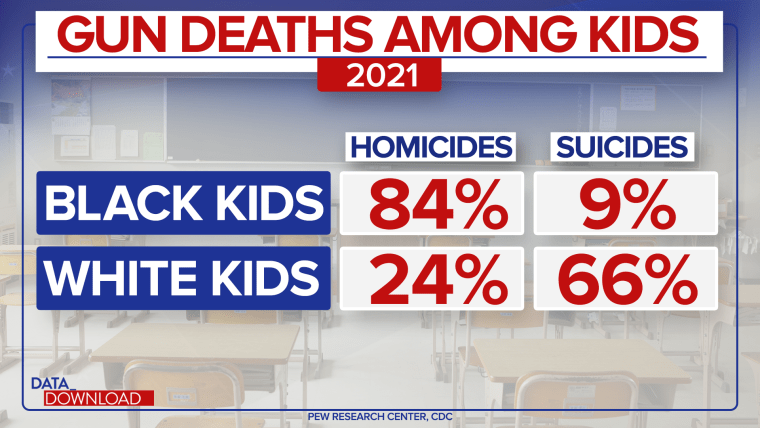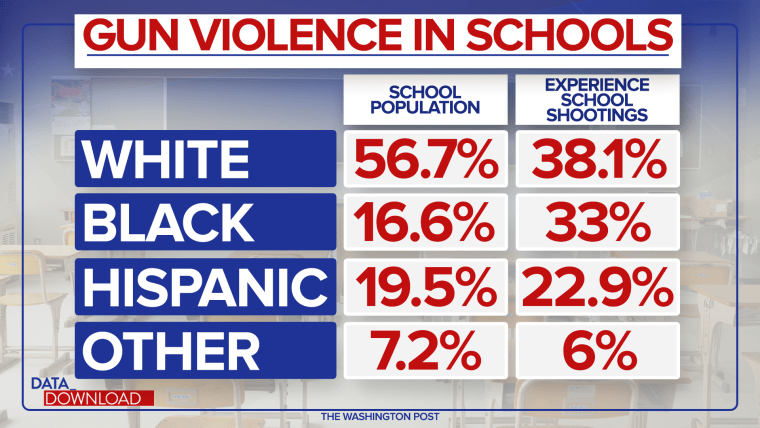WASHINGTON — Whenever there is a mass shooting in the U.S., the national gun debate intensifies, and in recent years that has increasingly meant discussing how to protect young people from gun violence amid a shocking rise in deaths.
Since 2019, gun violence has become the leading cause of death among Americans under age 18, surpassing car accidents. A closer look at the numbers reveals even more alarming trends, especially among young African Americans.
Let’s start by looking at just young people. An analysis of data from the Centers for Disease Control and Prevention by the Pew Research Center found that gun deaths among people under age 18 took a huge jump from 2019 to 2021.

In 2019, about 1,700 young people died because of gun violence. By 2021, the figure was almost 2,600. That’s an increase of about 50% — eye-catching growth even in a country that has grown accustomed to stories of mass and random shootings.
The time frame is important. Everyone remembers how much the Covid-19 pandemic shaped those years: People were locked down in their homes. Reports of tension and depression skyrocketed, crime rates rose, and young people weren’t immune.
The numbers raise an important question about gun violence among young people, however. While mass school shootings rightly get a lot of attention, the CDC data suggests the gun problem with young people is much larger and more complicated. Gun deaths among those under 18 spiked when many students were “studying remotely” from home.
And even more remarkable than the jump in gun deaths was the racial breakdown. In the 2021 data, the Pew Research Center found that Black children were hit much harder than other young people.

Among African American children, the rate of gun deaths per 100,000 people was 11.8. That was more than five times the figure for other racial and ethnic groups. For white children and Hispanics, the figure was 2.3 per 100,000, and for Asian children, it was even lower, at 0.9.
The difference in the 2021 numbers suggests a very different problem and challenge among Black children, which is confirmed when look at what drove gun deaths by race.

For Black youths, the numbers were driven, heavily, by homicides. Among young African Americans, more than 8 in 10 gun deaths were homicides, while fewer than 10% were suicides. The numbers were flipped for white youths. Two-thirds of all gun deaths among that group were suicides, while fewer than a quarter were homicides.
Such numbers may help explain why different lawmakers see the gun problem so differently.
Republicans, who tend to represent white constituents, usually talk about guns as a mental health problem. There are a number of reasons, of course. Republicans and their constituents tend to be big supporters of the Second Amendment. But in addition, mass school shootings usually focus on unhinged gunmen and tend to take place in suburban schools with whiter student populations. And the suicide problem, which has become something of an epidemic, is taking a larger toll among white youths.
But lawmakers who represent more African American constituents understand that the recent jump in gun deaths among Black youths reached far beyond campuses and mass school shootings — remember, the 2021 spike was during the pandemic — and that it was driven by homicides.
To be clear, Black youths still face gun violence in schools. But it looks different, according to data from The Washington Post that goes all the way back to 1999.

African Americans make up only about 17% of the school population, but they are about one-third of the students who experience school shootings, according to the Post data. Meanwhile, white students are about 57% of the student population, but they are about 38% of the student population that experiences school shootings.
But even those shootings are different, the Post found. The school shootings Black students experience “typically target a specific person, limiting the number of people shot — and the subsequent media exposure,” according to the analysis. In other words, the shootings don’t get the same attention, so they are less at the front of the public’s mind.
Taken together, the data paints an even more disturbing picture of gun violence among young people in the U.S. than the public sees in the headlines.
The steady coverage of mass school shootings calls attention to the dangers young people face from guns, but the data suggest the problem runs much deeper. The stories out of the nation’s Columbines and Newtowns and Parklands are terrible, but they are far from the whole picture.